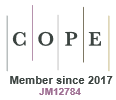Just Accepted
This article has been peer reviewed and accepted for publication. It is in production and has not been edited, so may differ from the final published form.
Pregnancy scanning of sheep in southern Australia. 1. Scanning for litter size was profitable across all modelled regions, times of lambing and genotypes
Abstract
Context. Pregnancy scanning allows ewes to be separately managed by litter size class to (i) meet recommended condition score targets to enhance survival and progeny productivity; (ii) prioritise allocation of multiple-bearing ewes to smaller mobs or more sheltered lambing paddocks, and (iii) select replacement ewes based on birth type. However, 70 percent of Australian sheep producers are not scanning for litter size. Aims. To establish the profitability of pregnancy scanning in southern Australia, to build a stronger business case to address the key perception by non-adopters that the case is weak. Methods. The profitability of pregnancy scanning was modelled, across 3 regions (long, medium and short growing seasons in southern Australia), 3 different genotypes (Merino, Merino x terminal and a maternal flock) and 3 lambing times (autumn, winter and spring) using the Australian Farm Optimisation Model. A simpler gross margin analysis was used to include the summer rainfall regions. Key results. Implementing optimal nutritional management, paddock allocation and replacement strategies based on litter size was profitable in all the scenarios of region, genotype, time of lambing and price tested. The increase in profitability in the winter rainfall zone averaged across the scenarios tested was $5.75 AUD/ewe scanned. In the summer rainfall zone the average increase in profit was $4.44 AUD/ewe scanned. Profitability was sensitive to sheep meat prices, but not sensitive to wool and supplement prices, nor overall reproductive rate. Conclusions. There is a strong business case for pregnancy scanning ewes for litter size via (i) selling of non-pregnant ewes ($1.75/ewe), (ii) better allocation of feed based on litter size ($2.00/ewe), (iii) allocating multiple-bearing ewes to the best lambing paddocks and/or reducing mob size to enhance lamb survival ($1.00/ewe), and (iv) accounting for birth type when selecting breeding replacements ($1.00/ewe). Implications. Pregnancy scanning for litter size is a relatively low-cost, high-profit and vital tool for improving reproductive rate, lamb and ewe survival rates, and lamb growth rates. Our findings extend previous, more limited studies, in terms of their reach across different regions, genotypes and production systems.
AN24278 Accepted 27 May 2025
© CSIRO 2025



